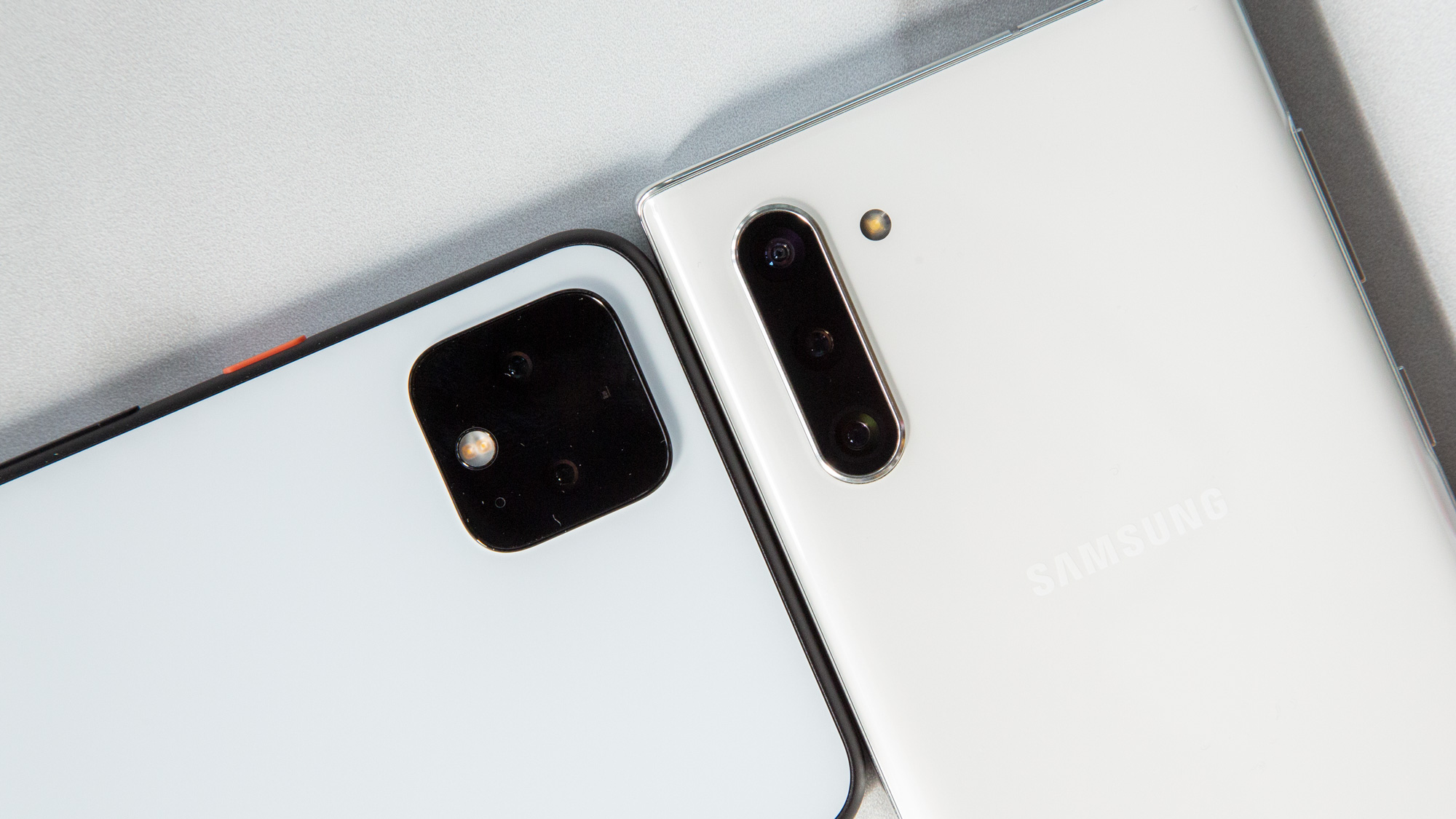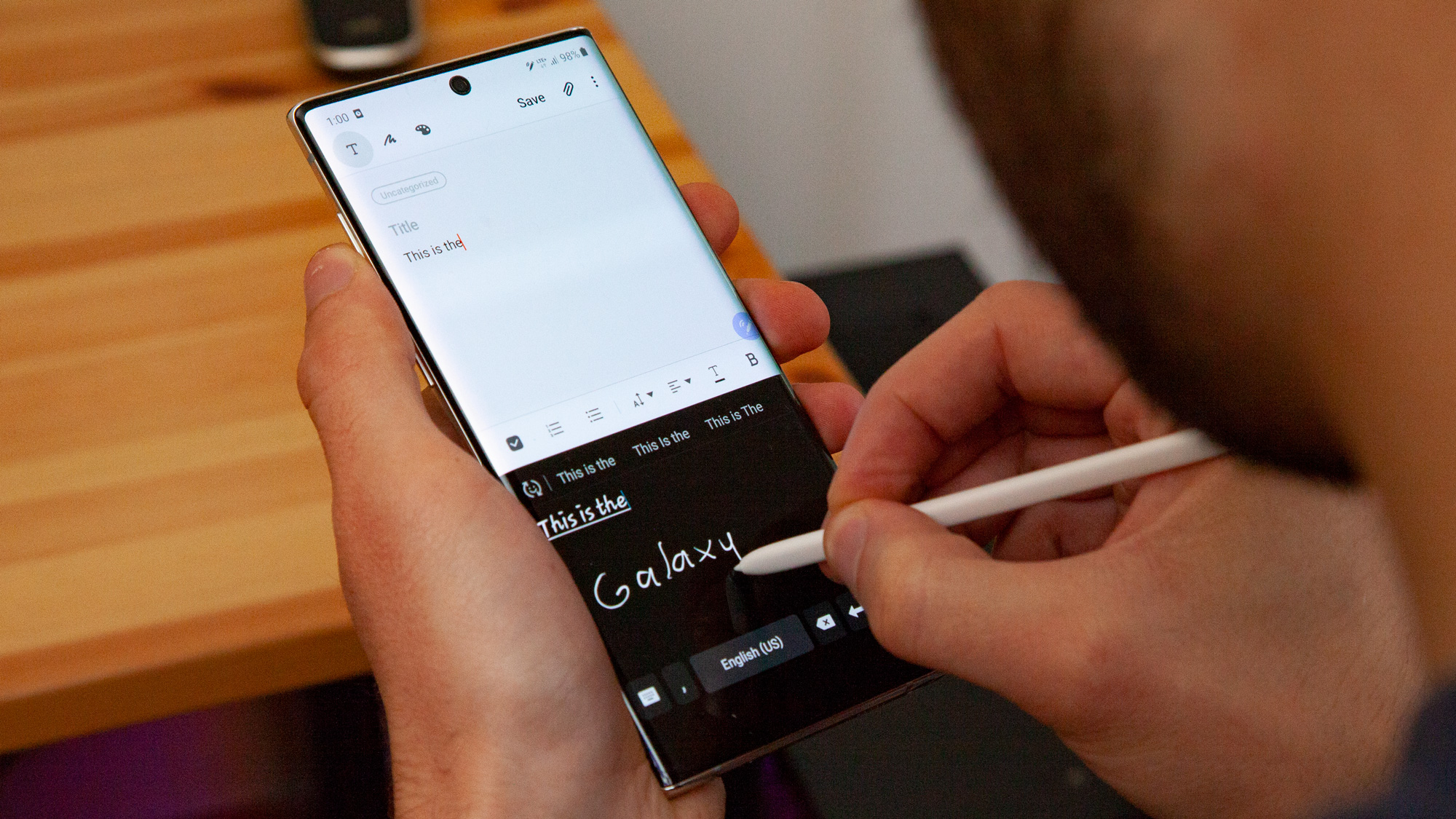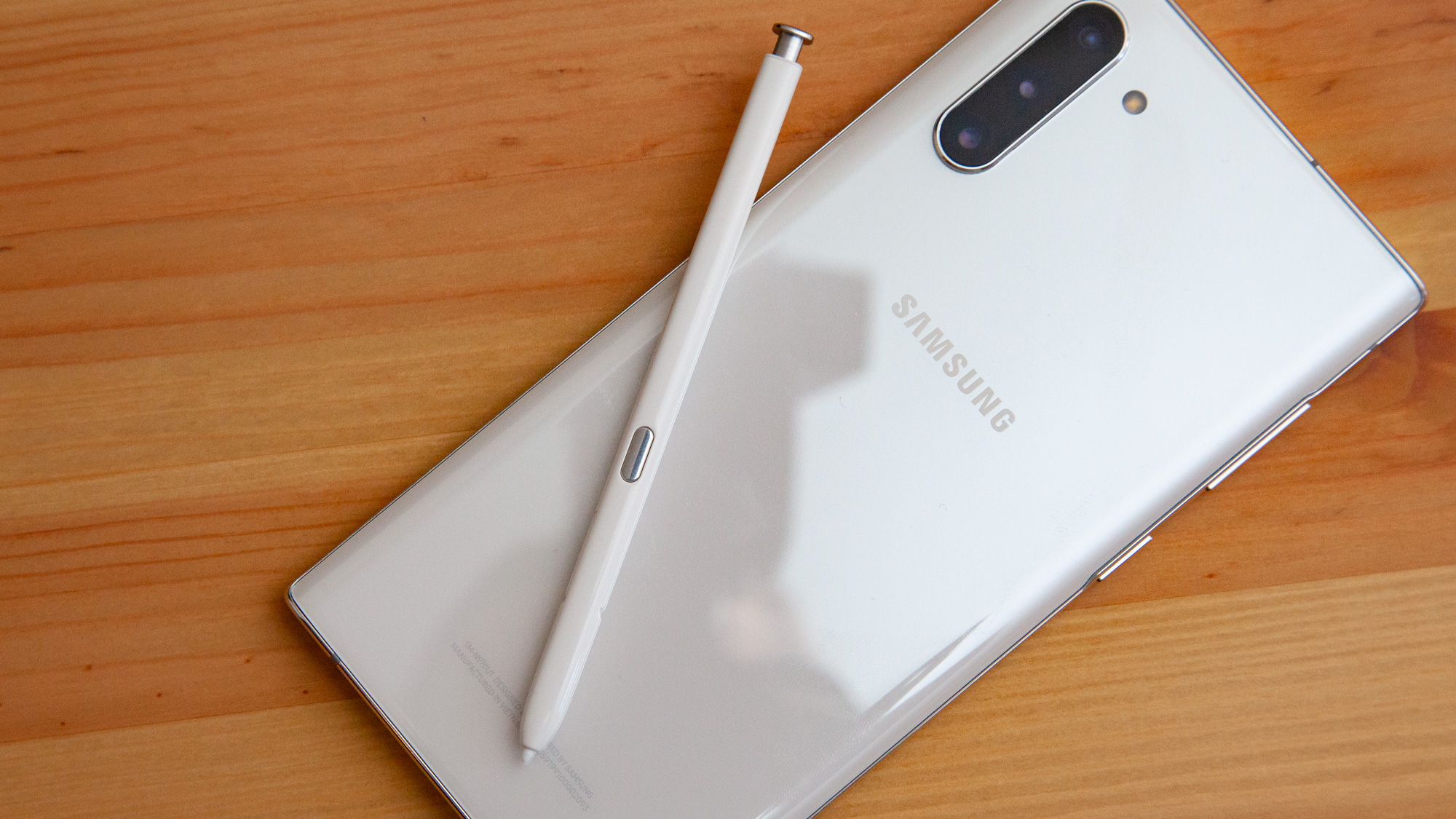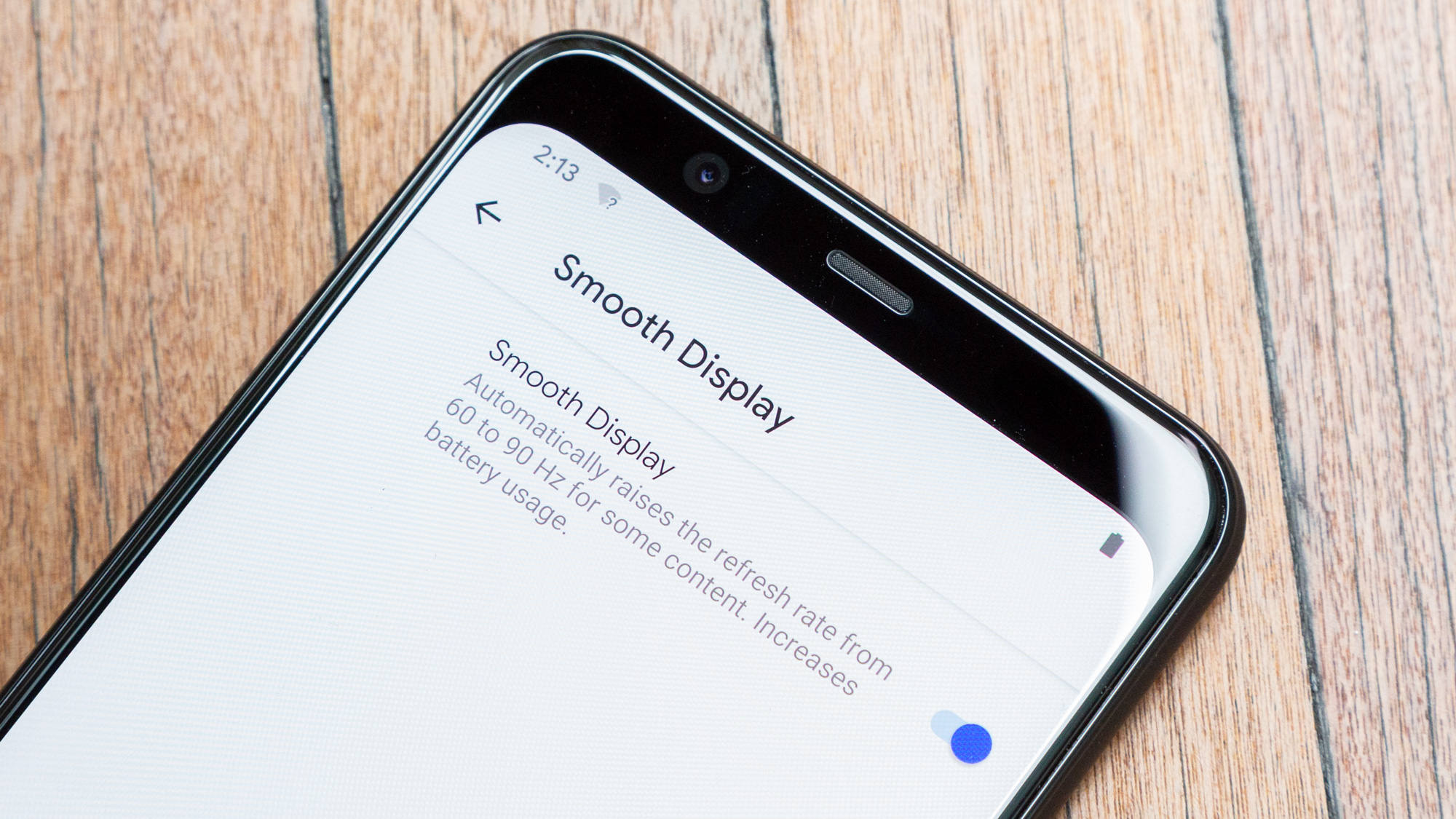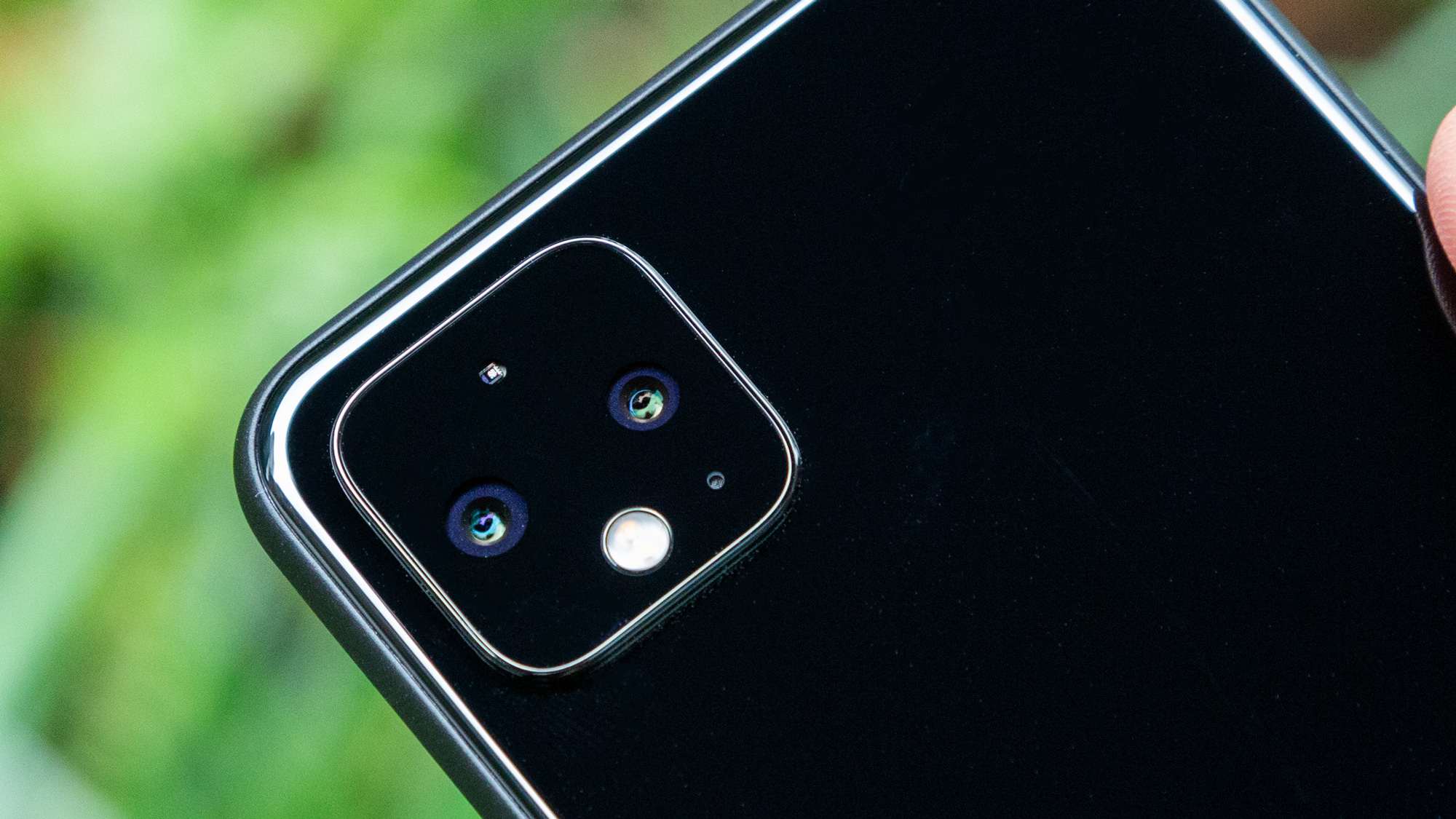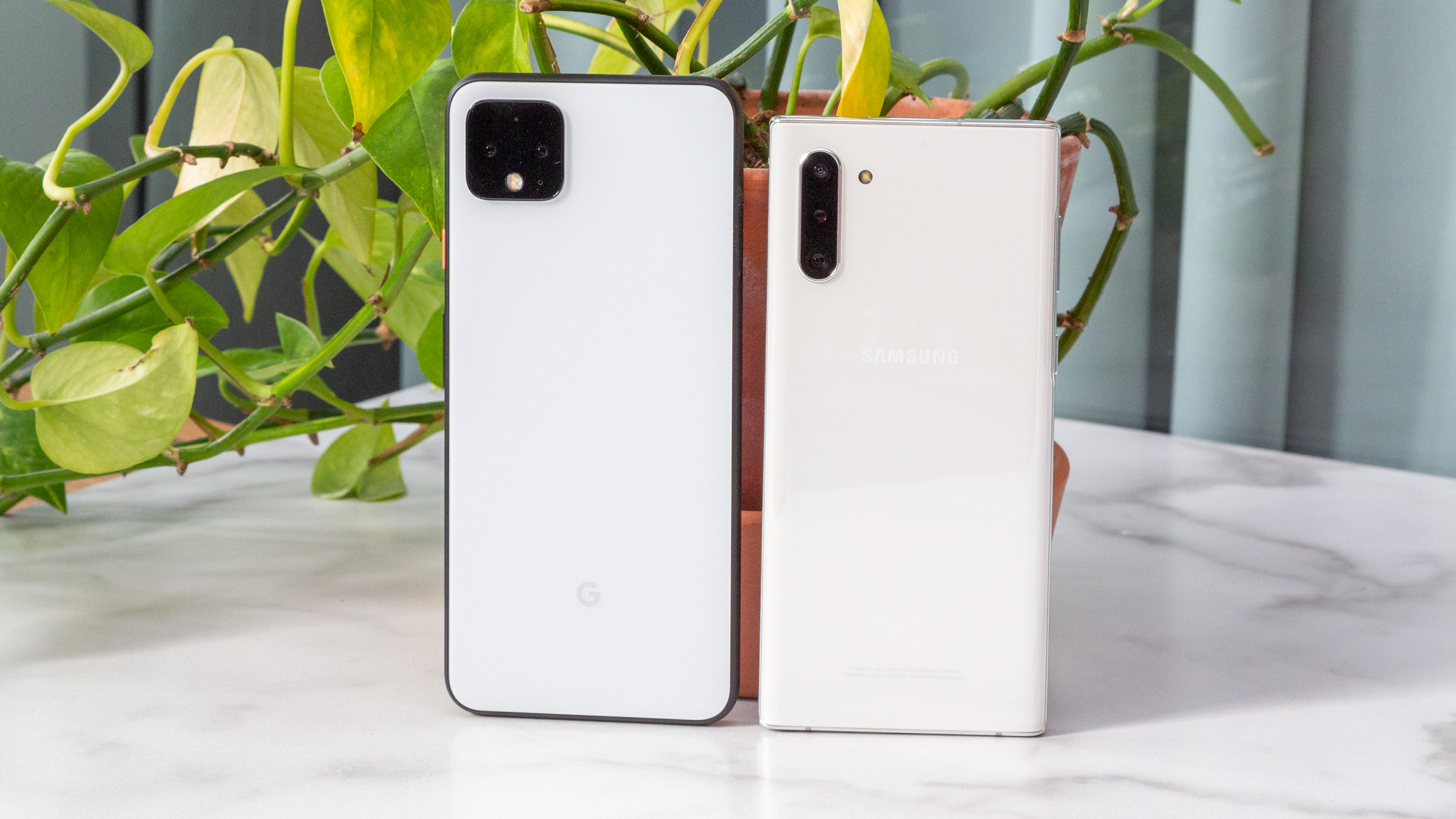Pixel 4 XL vs. Galaxy Note 10: Why Samsung Beats Google
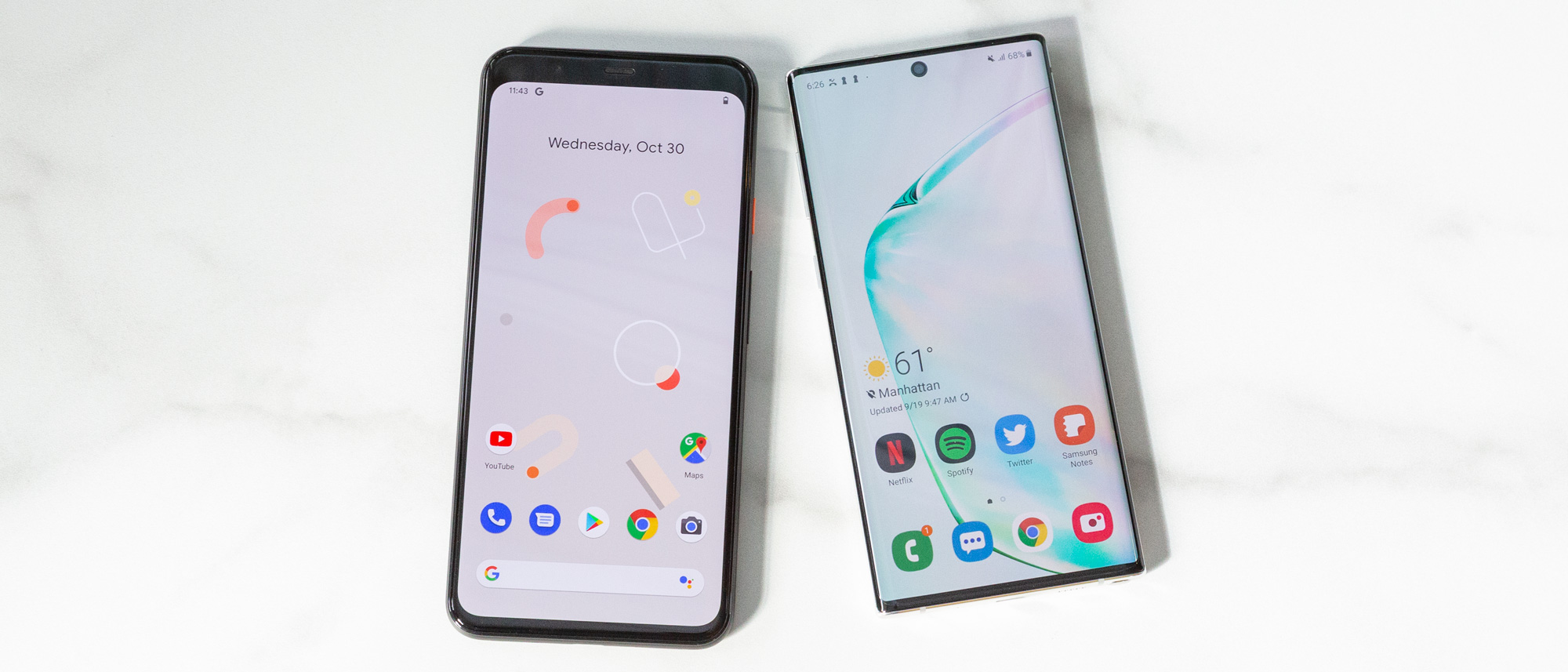
Dilemma: You’ve got somewhere shy of $1,000 to spend on one of the best Android smartphones. You’ve narrowed your options down to two contenders: the new Pixel 4 XL, and the S Pen-toting Samsung Galaxy Note 10.
No matter which device you choose, you’ll get a tantalizing, roomy, organic light-emitting diode (OLED) display and phenomenal performance. But in every other respect, these phones differ quite sharply. The Pixel 4 XL already has earned a reputation for its class-leading camera, while the Note 10 is beloved by the productivity-minded set for its expanded software features and S Pen, which is designed to help you get things done faster than ever before.
The two phones’ strengths certainly lie in different places. But which is the better device overall? Read on to find out.
Pixel 4 XL vs. Galaxy Note 10 Specs
| Header Cell - Column 0 | Pixel 4 XL | Galaxy Note 10 |
|---|---|---|
| Price | $899 | $949 |
| Display (resolution) | 6.3-inch OLED with 90-Hz Smooth Display (3040x1440) | 6.3-inch Dynamic AMOLED (2280x1080) |
| Rear cameras | Dual: 12.2-MP primary wide (ƒ/1.7); 16-MP telephoto with 2x optical zoom (ƒ/2.4) | Triple: 16-MP ultra-wide (ƒ/2.2); 12-MP wide angle (ƒ/1.5-f/2.4); 12-MP telephoto (ƒ/2.1) |
| Front camera | 8 MP (ƒ/2.0) | 10-MP (ƒ/2.2) |
| CPU | Qualcomm Snapdragon 855 | Qualcomm Snapdragon 855 |
| RAM | 6 GB | 8 GB |
| Storage | 64 GB, 128 GB | 256 GB |
| microSD slot? | No | No |
| Battery | 3,700 mAh | 3,500 mAh |
| Battery life | 9:42 | 9:25 |
| Colors | Just Black, Clearly White, Oh So Orange (limited edition) | Aura Glow, Aura White, Aura Black, Aura Blue |
| Size | 5.79 x 2.71 x 0.32 inches | 5.9 x 2.8 x 0.31 inches |
| Weight | 5.71 ounces | 5.9 ounces |
Pixel 4 XL vs. Galaxy Note 10 price and availability
The Pixel 4 XL is the cheaper of the two devices on paper, starting at $899 for a device with 64 GB of storage. Doubling capacity to 128 GB on Google’s handset jacks up the price to $1,000. Meanwhile, there’s only one configuration of the Note 10, and this $949 model comes with 256 GB of storage built in.
While the Pixel 4 XL may technically be less expensive, you get so much more storage for the extra $50 Samsung charges that Google’s lower starting price is essentially moot. And when it comes to availability, both phones are now available for all four major U.S. carriers' networks and is sold unlocked, with support for both GSM- and CDMA-based networks.
Winner: Galaxy Note 10
Pixel 4 XL vs. Galaxy Note 10 design
On paper, the Pixel 4 XL and Galaxy Note 10 are both technically classified as 6.3-inch smartphones, with 19:9 aspect ratios. Sit them side by side, though, and they couldn’t look more different from one and another.
Get instant access to breaking news, the hottest reviews, great deals and helpful tips.
The difference is all in the packaging: The Note 10 carves a footprint that’s barely larger than the surface area of its display, which curves over the left and right sides of the phablet in typical Samsung fashion. There’s almost no room on the face of the device that isn’t used for the screen. Even the front-facing camera is situated inside a cutout within the display, Infinity-O style.
By contrast, the Pixel 4 XL has a prominent top bezel that houses its selfie lens, earpiece and all the technology necessary to enable Face Unlock and Motion Sense air gestures. These are good uses for that space; after all, if you’re going to have a bezel, the real estate may as well be dedicated to something worthwhile.
However, that bezel does make the Pixel 4 XL more cumbersome to use — especially one-handed. Ridiculous though it may sound, the Note is noticeably more compact, even with its S Pen, which neatly tucks away in a compartment on the bottom right edge of the device. Samsung’s offering also lacks the Pixel 4’s eyesore of a square-camera bump on the back.
MORE: Pixel 4 XL vs. iPhone 11 Pro Max: Face-off
I like some of the intricate little touches on Google’s hardware, like the matte black frame, colored power key and etched-rear-glass panel on the Clearly White and Oh So Orange colorways. But Samsung’s design is more efficient, and that makes it easier to live with. Note buyers who are interested in an even larger screen can upgrade to the $1,099, 6.8-inch Galaxy Note 10 Plus.
Winner: Galaxy Note 10
Pixel 4 XL vs. Galaxy Note 10 display
Google and Samsung have both opted for 6.3-inch OLED panels in these handsets — and that’s where the similarities end.
Each display has its own advantages. On one hand, the Pixel 4 XL’s is higher resolution — Quad HD+ versus Full HD+ for the Note 10 — and offers a faster, 90-Hz refresh rate. But then the Note 10’s screen can get noticeably brighter, hitting a peak of 674 nits at its max setting, compared to the 418 nits of the Pixel.
So display which is better? Well, if you often find yourself blinded by the sun when using your phone outdoors, you’re going to want to go with the Note 10 for its far-superior brightness. However, for most people in most situations, the Pixel 4’s greater pixel density, as well as the buttery-smoothness of those 90-Hz animations, makes it slightly better overall.
MORE: Pixel 4 vs Pixel 4 XL: Which One Should You Buy?
The faster display simply makes the Pixel feel more responsive to your inputs. However, there is a big caveat: At the moment, Google limits 90-Hz performance to 75% brightness or higher; during all other times, it’s capped at 60 Hz. The company claims it will issue an update “in the coming weeks” to bring down the threshold at which the faster refresh rate kicks in, but it is a limitation that buyers should be mindful of.
Winner: Pixel 4 XL
Pixel 4 XL vs. Galaxy Note 10 cameras
The Pixel 4 XL brings dual lenses to one of Google’s phones for the first time. In addition to the standard 12.2-megapixel sensor, the newest Pixel tacks on a 16-MP telephoto designed primarily to assist with zoom. Using Google’s Super Res Zoom technology, this lens can capture up to 8x digitally-zoomed images with quality comparable to what you’d get from optical power.
One thing you won’t find on the Pixel 4 XL is an ultrawide shooter, which the Galaxy Note 10 does have. In total, Samsung’s phablet features three lenses on the back — a 12-MP standard one, a 12-MP telephoto and that 16-MP ultrawide camera — which at least makes it more versatile than Google’s device in terms of the range of perspectives you’re able to capture.
Both phablet have great cameras all around, though the Pixel 4 XL’s shooters are slightly superior in many respects. While I’m impressed (from a technical standpoint) with the way Samsung’s optics are able to tease more detail out of the bushes in the foreground of this sunny scene, the image is not really true to the actual conditions. Here, the environment is backlit, and the Pixel 4 XL demonstrates a better understanding of that. The Note 10 also struggles to resolve fidelity in the leaves and branches of the tree in the background, blowing out a large portion of the left side while applying too much contrast to the shadows on the right.
Many smartphone cameras impress when light is plentiful, so I went indoors to capture a few 2x close-ups of model cars. I chuckled to myself when I noticed that Samsung’s Scene Optimizer technology recognized that the subjects were automobiles — even though they weren’t real ones — and tuned the exposure slightly to match. However, evidently none of that helps the final result much, as the Note’s shot is noisy and blurry in places compared to the Pixel’s.
Additionally, if you want the best camera for drawing in really close to a subject, the Pixel 4 XL achieves more detail at higher digital zoom values than the Note 10, all thanks to that Super Res Zoom magic.
Then came the ultimate test: nighttime. I cannot stress enough how dark it was outside when these pictures were taken; both phones’ respective night modes were working overtime, leaving the shutter open for upwards of 5 seconds each to absorb as much light as possible. They were valiant efforts, though neither shot turned out particularly great, as both Samsung’s and Google’s software have a predisposition to brighten the night sky to an absurd degree.
If I’m forced to choose between the two, I’d have to side with the Pixel 4 XL’s interpretation here, as it draws out more saturated, lifelike hues — a real challenge in conditions such as these — while keeping the noise in check, unlike the Note 10.
Finally, I turned to each device’s front-facing camera, and came away torn. Samsung has a leg up by employing a sharper 10-MP sensor on the front of its phablet, which simply delivers much sharper portraits all around than Google’s 8-MP sensor. I also much prefer the Note’s more zoomed-in perspective, which flattens the face a bit and pulls the background in — something you typically want in a good portrait.
The Pixel comes up short in both respects, and also allows some bokeh to creep into my beard on the left side. However, Google’s lighting is once again unmatched here, rendering my skin tone much more accurately than the undersaturated, over-brightened selfie that the Note delivered.
MORE: Best Camera Phone - Smartphones With the Best Quality
The Pixel 4 XL’s camera is more likely to impress in most scenarios, though we should stress once more that the Note 10 offers a whole extra perspective that Google’s flagship cannot provide. That will matter a lot to users empowered by the unique characteristics of an ultrawide lens. If you count yourself among that crowd, determining which camera is better is a closer call than it looks.
Winner: Pixel 4 XL
Pixel 4 XL vs. Galaxy Note 10 software and special features
The Pixel 4 XL is the first new phone to launch with Android 10, the latest version of Google’s mobile OS. The Galaxy Note 10 only launched a handful of weeks earlier, yet is still kicking on Android 9 Pie, While Samsung’s Android 10 update is actually in beta now, it likely won’t arrive for all phones until early 2020.
Additionally, Pixel 4 XL owners can expect three major software updates over the lifetime of their devices, while Samsung tends to cap its support at two.
Android on Samsung’s Galaxy handsets looks and works a little differently than it does on Google’s Pixels, and that’s mostly thanks to the company’s custom One UI front end. But One UI on the Note 10, in particular, adds a number of phablet-specific features that leverage the versatility of the S Pen.
You can pull out the S Pen at a moment’s notice and scrawl out a Screen Off Memo without waking the phone. You can also easily transcribe handwriting to text, and export the contents of your notes in one fell swoop with a handy shortcut Samsung has built into the software. The S Pen can be used as a remote shutter when snapping photos, and help you to navigate the Note’s camera app from afar with air gestures. And Samsung’s DeX mode allows you to use your phablet as a desktop computer, with either a cable or dock, so long as you have an external display at your disposal.
MORE: Best Phablet: Top Big Screen Phones (6 Inches or Larger)
The Pixel 4 XL cannot do any of these things — though you could say it supports air gestures of a sort, using Google’s Motion Sense technology. This feature, powered by the company’s new Soli radar, allows you to swipe your hand over the top of the device to skip tracks during music playback, or silence alarms.
The Soli radar also helps to expedite the Pixel’s new Face Unlock system, which renders a three-dimensional map of your face, just like the TrueDepth camera system in Apple’s recent iPhones, for more secure authentication. The Note 10 lacks a Face Unlock system this sophisticated, though it does have an ultrasonic fingerprint sensor baked into the display.
So then, which handset comes out on top in the software front? It’s a tough call. The Note 10 offers more productivity benefits thanks to its S Pen, but will not receive Android updates for as long. The Pixel 4 XL has a pretty well-implemented Face Unlock system, though it’s come at the expense of a tried-and-true fingerprint sensor, and those Motion Sense gestures can’t be used for much yet. Ultimately, you should favor the device that speaks more to your priorities, as they both certainly have their strengths.
Winner: Tie
Pixel 4 XL vs. Galaxy Note 10 performance
Inside both the Pixel 4 XL and Galaxy Note 10 is Qualcomm’s Snapdragon 855 system-on-chip (though, outside North America, the Note employs Samsung’s Exynos silicon).
You get a lot more RAM and storage from Samsung’s device. While the Pixel 4 XL only comes with 6 GB of RAM and 64 GB of space for apps and media, the Note 10 packs 8 GB and 256 GB, respectively. Plus, the flash storage inside the Note is of the newer UFS 3.0 spec, which provides faster read-and-write speeds compared to the UFS 2.1 technology used in the Pixel 4 and the majority of other high-end phones.
You’ll definitely want the Note’s extra capacity, because neither of these handsets pack a microSD slot for expandability. You could upgrade the Pixel 4 XL to 128 GB of storage, though that’ll increase the price $100 — up to $999 — $50 more than the Note 10 costs.
Otherwise, the Pixel 4 XL feels just as snappy as the Note 10 to use. The benchmarks bear this out, as Samsung’s phablet finished ahead of Google’s handset in the system-wide Geekbench 5 test, but only just, by a score of 2,640 to 2,582. On the flip side, the Pixel came out on top in 3DMark’s Sling Shot OpenGL ES 3.1 graphics test by a wider margin — 5,806 to 5,374.
MORE: The 10 best Android phones
Either way, you’re getting a powerful Android flagship. However, the Note 10’s increased RAM and higher-quality storage gives us peace of mind that that device will offer better performance over the long term.
Winner: Galaxy Note 10
Pixel 4 XL vs. Galaxy Note 10 battery life
As phones are becoming more powerful all the time, great battery life seems to be getting harder to find. And phone makers have responded by jacking up the size of batteries inside their latest models.
The Pixel 4 XL and Galaxy Note 10 don’t do anything to buck that trend. Inside Google’s phone, you’ll find a 3,700-mAh battery — the largest ever in a Pixel — while Samsung’s is rated at 3,500 mAh.
And yet, neither battery lasts all that long on a charge. The Pixel delivered 9 hours and 42 minutes on a single charge while streaming websites over T-Mobile’s LTE network, whereas the Note called it quits after 9 hours and 25 minutes.
Other handsets tout far better endurance. The LG G8X ThinQ turned in 11 hours and 49 minutes in the same test, while the iPhone 11 Pro Max delivered 11 hours and 54 minutes.
At least the Pixel 4 XL and Note 10 will charge up relatively quickly, with both getting to around 45% after 30 minutes plugged into the stock adapter, based on our testing. The Note 10 in particular has the added benefit of being able to wirelessly charge other devices, using Samsung’s PowerShare feature.
Winner: Pixel 4 XL
Overall winner: Galaxy Note 10
The Pixel 4 XL is a phenomenally clever phone with a killer camera, but the Galaxy Note 10 is just a better value — simple as that.
| Header Cell - Column 0 | Pixel 4 XL | Galaxy Note 10 |
|---|---|---|
| Price and availability (10) | 6 | 8 |
| Design (10) | 7 | 9 |
| Display (10) | 8 | 7 |
| Camera (25) | 23 | 21 |
| Software (10) | 8 | 8 |
| Performance (15) | 11 | 13 |
| Battery life (20) | 13 | 12 |
| Total (100) | 76 | 78 |
With Samsung’s phablet, you’re getting far more storage and RAM, all for just $50 more than the cheapest Pixel 4 XL. You get all the versatility of the S Pen, in addition to a more cutting-edge design and a brighter display that’s easier to use outside.
Of course, Google’s flagship has its advantages — its cameras handle challenging lighting scenarios better; it has a slightly larger battery that may outlast the Note 10’s now and then, and it has the convenience of secure Face Unlock. Where it counts, though, the Note is strong enough, even in those areas where it’s not quite as good as the Pixel, and it’s plainly a superior value overall. That makes it the big-screen Android phone we’d rather buy with our own money.
Adam Ismail is a staff writer at Jalopnik and previously worked on Tom's Guide covering smartphones, car tech and gaming. His love for all things mobile began with the original Motorola Droid; since then he’s owned a variety of Android and iOS-powered handsets, refusing to stay loyal to one platform. His work has also appeared on Digital Trends and GTPlanet. When he’s not fiddling with the latest devices, he’s at an indie pop show, recording a podcast or playing Sega Dreamcast.
